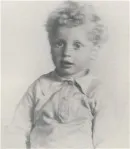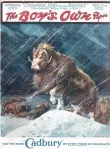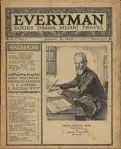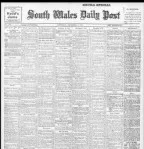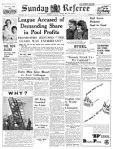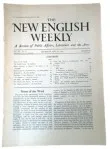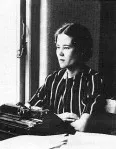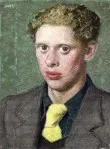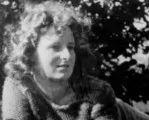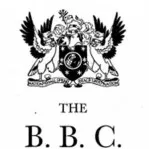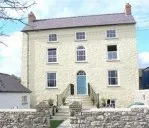The Dylan Thomas Birthplace
Timeline of Dylan’s Life
Dylan Thomas – The Timeline
Although quite short, Dylan’s life was also very eventful. Here we chart some of the major milestones in his life.
1914
Dylan Marlais Thomas born at 5 Cwmdonkin Drive, Swansea
October 27th, 1914
Dylan Marlais Thomas was born on 27th October 1914. His father chose ‘Dylan’ from the classic medieval Welsh story prose romance The Mabignon. In which Dylan ‘A fine boy-child with rich yellow hair’makes a brief appearance. The name was virtually unknown before Dylan’s father named him. Dylan means ‘sea’ or ‘ocean’. Marlais came from Dylan’s uncle Gwilym whose bardic name Gwilym Marles was after the River Marlais where the was the bardic name of his uncle Gwilym, a poet and preacher came from in from rural Carmarthenshire. Swansea was then an industrial town where many country folk had settled. The Thomases arrived in Cwmdonkin Drive with their 8 year old daughter Nancy. They called the house ‘Glanrhyd’ after a family farm in Carmarthenshire.
1925
Dylan a pupil at Swansea Grammar School where his father teaches English
September, 1925
The grammar school was established by Hugh Gore Bishop of Wexford, and dates back to 1632. When Dylan was a pupil he would probably not have paid fees as his father taught English at the small school. In those days the school was on Mount Pleasant Hill but most of it was destroyed during the Second World War. Dylan went to the school between 1925 and 1931. Dylan’s father used to wear a hat most of the time because he was very conscious that he was losing his hair.
Dylan’s Song of a Mischievous Dog published in school mag, which he later edits
September, 1925
Dylan often published poems in the school’s magazine. The first were called “The Song of the Mischievous Dog” and “His Repertoire”. He later contributes essays, stories and edits the magazine. Dylan was also in school plays and won the 1 mile race. Towards the end of his school days, Dylan stopped regularly attending classes. His father (DJ pictured), being one of the schoolmasters, turned a blind eye to his son’s absenteeism. Instead, young Dylan pursued his own interests.
1927
Dylan’s poem His Requiem appears in Wales’ Western Mail newspaper
January 14th, 1927
At the age of 12, Dylan had his first poem published in a daily newspaper. “His Requiem” consists of two verses of 2 and 16 lines and was simply signed ‘D.M. Thomas’. It was later found that it was plagiarised as Dylan had ‘borrowed’ it from Boy’s Own Paper. The Western Mail was an English language broadsheet based in Cardiff. It was traditionally associated with coal and iron industrialists and was seen as a little conservative.
1929
One of Dylan’s couplets is quoted in London magazine Everyman
October, 1929
Dylan was around 15 years old when one of his couplets was quoted in the Everyman Magazine London. Everyman was founded in 1912 by J. M. Dent (whose company would later publish Dylan’s works). The magazine was proudly about ‘Books, Drama, Music and Travel’. All of which Dylan would soon be all too fond. The publication was the talk of the literary society although not the popular with everyman in the street.
Dylan’s essay Modern Poetry is published in the school magazine
December, 1929
Dylan was an avid contributor to the school magazine as these cuttings show.
1930
Dylan begins the first of his notebooks containing his poetry
April 27th, 1930
In 1930, at the age of 15, Dylan started writing the first of his five documented notebooks containing dozens of his poems. Five of these notebooks survive but there are thought to have been as many as 10 also containing short stories created during his time at 5 Cwmdonkin Drive. Four of the surviving notebooks (school exercise books) are held by the Lockwood library within the University of Buffalo, New York. The fifth was discovered in 2014 and bought by Swansea University. Dylan continued writing in these books until his early twenties and continued to work on the poems until the mid 1940s. It is these poems that he would later use in his first four books; 18 Poems, Twenty Five Poems, The Map of Love and Deaths and Entrances The notebooks were all written during Dylan’s time in Swansea at 5 Cwmdonkin Drive – most in his tiny bedroom – his first writing room.
1931
Dylan leaves school to become a reporter on the South Wales Daily Post
July, 1931
Dylan’s father found him a job on the local South Wales Daily Post as a trainee reporter. In the office he was unpopular as he was always late and distracted. After some six months, he moved to the weekly Herald of Wales and wrote a diary column and a series of articles about The Poets of Swansea. Despite more money, Dylan felt his career was going nowhere and began to stay out late and get drunk. He became less and less interested in his work and left in 1932.
1932
Dylan leaves his job but continues as a freelance journalist
December 16th, 1932
When Dylan stopped working as a full time journalist, his father was ashamed of him. D.J. complained that Dylan had used up the family finances. His mother as always remained affectionate, even scolding his sister Nancy for using the ink Dylan would need to write his poems. In the end Mrs. Thomas’s faith was rewarded and two years later Dylan’s first book of poems was published by The Sunday Referee in a short volume entitled 18 Poems.
1933
And Death Shall Have No Dominion is published in the New English Weekly
May 18th, 1933
And Death Shall Have No Dominion was written here in Cwmdonkin Drive and later appeared in Dylan’s collection called 25 Poems on 10th September 1936. The poem deals with resurrection after death. This and other such poems have often cause Dylan to be considered as a religious poet, despite his hedonistic lifestyle. The title appears to have been inspired by Romans 6:9 from the King James Bible – “Death hath no more dominion”. The title and frequent use of the phrase gives the theme of the poem and its solemn tone.
1933
Dylan’s first visit to London at the age of 19
August, 1933
In September 1933, Dylan’s poem That Sanity be Kept was published in the Sunday Referee. It prompted a fan letter from a young poet called Pamela Hansford Johnson. The two sent flirtatious correspondence and photographs, poems and criticism of each other’s poems. This continued for some four months before the two actually met in 1934. In June 1934, Dylan asked Pamela to marry him but she decided to keep him waiting. Dylan’s drinking led to the end of their relationship. She later married the writer Lord (C P) Snow.
1934
Dylan’s first visit to Laugharne
May 20th, 1934
In 1934 Dylan went to Laugharne for the first time and was enchanted by its imposing 13th-century Castle, Carmarthen Bay and views over the Taf estuary. Dylan apparently described it as “The strangest town in Wales” on his initial visit. The peace and quiet of this sleepy town provided an enduring draw for the young poet. He would later return to its old pubs, lanes and familiar faces with his young family.
1934
Dylan moves to London
November 10th, 1934
Dylan moved to London at the end of 1934 to over see the production progress of his first book (18 Poems) and to engage more with literary circles. He co-rented a room at the top of the student hostel in 5 Redcliffe Street with his aspiring painter Swansea Fred Janes. The only furniture they had was two camp beds, a table and a gas oven. Fred later painted Dylan as the dapper artist. In the same building was school friend Mervyn Levy who would also paint Dylan.
1934
Dylan’s first volume of poetry – 18 Poems – is published
November 18th, 1934
18 Poems was published in December 1934 when Dylan was 20. The book reveals an obsessed, inward looking mind arguing about death and birth, sin and redemption and natures process of decay. Dylan highlighted the importance of word sound; its immediate impact and sensory power of poems. The Sick Rose is believed to have been influenced by Dylan’s own perceived tuberculosis and the cyclical, inevitability, of life.
1936
Dylan moves to Cornwall and meets Caitlin Macnamara
April, 1936
By this time Dylan was living in Cornwall but on a trip to London he met Caitlin Macnamara. Her father was Irish and her mother French but the She was from Ireland and attractive dancer with blue eyes and blonde hair was born in London and brought up in Hampshire. She was greatly admired by men. She had run away from boarding school to become a dancer and posed as a model for artists and was seduced by Augustus John. Dylan met her at the Wheatsheaf pub in London.
1936
Dylan’s second collection of poems (Twenty-Five Poems) is published
September 10th, 1936
25 Poems was Dylan’s second collection and was published in September 1936. Written during Dylan’s early manhood, these poems are of a greater clarity and coherence. Though still dealing with the same themes of death, sin and sex, it includes such poems as This bread I break, Ears in the turrets hear and The hand that signed the paper (his only explicitly political poem).
1937
Dylan makes his first radio broadcast Life And The Modern Poet
April 21st, 1937
In 1937 Dylan’s parents proudly listened to Dylan broadcasting on the newly established Welsh branch of the BBC. He recorded the piece in London, apparently after being dragged to Broadcasting House from a nearby pub. His parents were always proud when Dylan had success. Dylan would always address his parents respectfully, in contrast with his behaviour towards everyone else.
Dylan and Caitlin are married in Penzance, Cornwall
July 11th, 1937
Provided with a £3 loan for a marriage licence from friend Wyn Henderson, who ran the Lobster Pot guesthouse, Dylan Thomas married Caitlin Macnamara at Pheonix House – Penzance Registry Office on July 11th 1937 in front of two witnesses. Their honeymoon began at the Lobster Pot before they moved on to Fradgan Studios, Newlyn.
News of the marriage was not greatly welcomed by Dylan’s parents. His father calling it a ‘mad marriage.’
1938
Dylan begins negotiations for publication of his work in America
March, 1938
Inspired by black and white Hollywood movies, Dylan had long seen America as the answer to all his financial woes and a natural home for his talents. Success would come slowly, periodicals and magazines first. Soon the US academic and publishing world requested more work and Dylan’s life changed for ever. Nearly twelve years later John Malcolm Brinnin would organise Dylan’s first US tour.
Dylan & Caitlin move to his parents’ house in Swansea
April, 1938
The young couple return to Swansea to stay with Dylan’s parents. The Thomas’s had sold 5 Cwmdonkin Drive the year before to another schoolmaster, Emlyn Davies, and were living in a smaller rented house called Marston in Bishopston on the Gower Peninsula
1938
Dylan begins negotiations for publication of his work in America
March, 1938
Inspired by black and white Hollywood movies, Dylan had long seen America as the answer to all his financial woes and a natural home for his talents. Success would come slowly, periodicals and magazines first. Soon the US academic and publishing world requested more work and Dylan’s life changed for ever. Nearly twelve years later John Malcolm Brinnin would organise Dylan’s first US tour.
Dylan & Caitlin move to his parents’ house in Swansea
April, 1938
The young couple return to Swansea to stay with Dylan’s parents. The Thomas’s had sold 5 Cwmdonkin Drive the year before to another schoolmaster, Emlyn Davies, and were living in a smaller rented house called Marston in Bishopston on the Gower Peninsula.
Dylan and Caitlin move to Laugharne
May, 1938
In May 1938 Dylan settle in Laugharne; first at Eros in Gosport Street before moving to larger Sea View. Dylan would work in a gazebo in the battlements of the uninhabited castle overlooking the water. The castle was leased by the writer Richard Hughes (A High Wind over Jamaica) who helped them settle in Laugharne. When he discovered that the owner kept a wine cellar there he regularly raided it with Caitlin. Dylan gained a reputation for drinking and not paying his bills but was liked particularly for his politeness to older people.
1939
The couple’s first son, Llewelyn, is born
January 30th, 1939
Llewelyn Edouard Thomas was born on 30th January 1939. He was Dylan and Caitlin’s first child. At two he was sent to live with Caitlin’s sister Brigit and their mother Yvonne. He was later sent away to board at Magdalen College school, Oxford. The experience haunted him for the rest of his life. He later went to Harvard. In adult life he was a brilliant copyrighter who sadly died in 2000 at the age of 61.
A collection of poems and prose, The Map Of Love, is published
August 24th, 1939
The Map of Love contains 7 stories and 16 poems. It continues the style and themes of Dylan’s earlier work and includes the love poem for Caitlin I make this in warring absence. If my head hurt a hair’s foot and A saint about to fall were also written when Caitlin was pregnant with their first child Llewelyn. In the latter, the unborn boy converses tenderly with his mother. The poetry is influenced by John Donne the 16th century writer noted for his realistic sensual style.
The World I Breathe becomes Thomas’ first collection published in America
December 20th, 1939
The World I Breathe was published on 20th December 1939 in 700 copies. It was Dylan’s first collection published in America and so is little seen in the UK. The volume contains 40 poems from Dylan’s earlier works (contained in 18 Poems, Twenty-Five Poems and The Map of Love). The title comes from the poem beginning To-day, this insect, and the world I breathe which is featured in the book and was originally in Twenty-Five Poems.
1940
Dylan leaves Laugharne to move to London
January 30th, 1939
When the Battle of Britain began and Wales suffered from bombing, Dylan took his own family to live in the Cotswolds. The family was extremely low on money and started moving around from house to house, usually staying with relatives or acquaintances. Margaret Taylor, the wife of the historian and Oxford Don A J P Taylor, was their main benefactor – much to her husband’s annoyance.
Portrait Of The Artist As A Young Dog is published
September 24th, 1940
1,500 copies of Portrait Of The Artist As A Young Dog were published in the UK on 4th April 1940 at 7s 6d. The 254 page book contains some of Dylan’s best loved short stories including A Visit to Grandpa’s and The Fight. A few months later the book was published in America. The book’s title is a take on A Portrait of the Artist as a Young Man the semi-autobiographical novel by James Joyce.
Dylan begins writing war propaganda film scripts
October, 1940
As World War Two raged, Dylan made his own contribution to the Allied effort. He was employed by Strand Films to write and make properganda films. Some of his titles included A City Reborn, New Towns For Old, These Are The Men and Battle For Freedom. Some were narrated by Dylan himself and all were written with his usual talents and style. Despite being a well paid job, Dylan still needed to ask friends and acquaintances for money.
1943
New Poems published
February, 1943
New Poems was published by New Directions in February 1943. A total of 2,500 copies were issued of which 1,000 were with paper boards for sale at 50c and the rest in wrappers at $1. Due to a printing error the first run was printed larger than desired and so was scrapped. The ones now in circulation were reprinted in New York City.
Dylan’s Daughter Aeronwy is born in London, named after the Aeron River
March 3rd, 1943
On 3rd March 1943, Caitlin gave birth to a baby girl with curly blonde hair and blue eyes. She was called Aeronwy, after the Aeron Valley in Cardiganshire where she was conceived. Aeronwy was born in London and became a successfull poet in her own right. She was a patron of the Dylan Thomas Society and supported such projects as The Dylan Thomas Prize. Sadly she passed away in 2009 aged 66.
1944
The family moves to Bosham in Sussex
February, 1944
With London facing waves of nightly bombing, Dylan and Caitlin moved temporally to Far End, Old Bosham, to avoid the air raids. Shortly afterwards they then move to Hedgerley Dean, near Beaconsfield and stayed with Donald Taylor who employed Dylan at the BBC as a scriptwriter until around 1945.
The family moves to New Quay in Cardigan Bay
September 4th, 1944
Dylan was terrified by the air raids and was shaken when a bomb killed a friend walking a few paces behind him. In 1944 Dylan and Caitlin moved to New Quay in Cardiganshire to escape the bombing. They stayed in a cottage called Majoda next door to his childhood friend Vera Phillips. After a fight with Vera’s soldier husband, Captain William Killick, the man fired his machine gun into Dylan’s house and above the air.
Dylan records Quite Early One Morning for the BBC Welsh Home Service
December 14th, 1944
In 1944 Dylan recorded Quite Early One Morning for the BBC Welsh Service. It followed lobbying from producer Aneirin Talfan Davies who encouraged his bosses to allow Dylan to broadcast impressions of New Quay. Some claim it was this account of life in Cardiganshire that paved the way for Under Milk Wood. Aneirin would later rise up the corporation, producing Dylan and editing respected collections of his work.
1945
Dylan records Memories of Christmas for the BBC Welsh Service Children’s Hour
December 6th, 1945
The producer of the Welsh Children’s hour programme suggested that Dylan give a radio talk entitled Memories of Christmas. Dylan read the piece on the BBC in 1945. Almost five years later, he reworked the text and sold it to Harpers Bazaar for $300. It was published under the title A Child’s Memories of a Christmas in Wales. Though it sold modestly at first, it soon became extremely popular in America. It was later published in book format in 1954.
1946
Deaths And Entrances which contains Fern Hill is published
February 7th, 1946
Deaths And Entrances takes its title from a sermon by poet John Donne. The finished poem was a reworking of the original which he wrote in his notebook in 1933. It shows the effect of the war on Dylan; A Refusal to Mourn and Ceremony After a Fire Raid commemorate air raid victims. Dylan’s experience as a fire-watcher in London inspired the poem Among Those Killed in the Dawn Raid was a Man Aged a Hundred. The poems have a strict, tightly-knit, formal structure. The Hunchback in the Park depicts Cwmdonkin Park, where Dylan played as a child.
Selected Writings is published in America
November 8th, 1946
The 184 page Selected Writings was published in America on 8th November 1946 by New Directions. It contained a selection of poems and stories from Dylan’s earlier books. Works included; I see the boys of summer, If my head hurt a hair’s foot, Hold hard and The hand that signed the paper. Following Dylan’s increased American popularity 4,000 copies were printed for sale at $3.50.
1948
Dylan stays in Llangain with his father, while Dylan’s mother Florence is in hospital
February, 1948
Dylan’s mother’s family came from Llangain and owned three cottages. Dylan stayed there for about a month in 1933 and wrote early drafts of two of the poems used in his first book 18 Poems. Later in 1941 his parents moved to Llangain and Dylan and Caitlin stayed with them during the summers of 1944 and 1945. Dylan returned in 1948 to be with his father when Florrie was in hospital.
1949
Dylan and family move to the Boat House in Laugharne
May, 1949
In 1949 Margaret Taylor paid £3,000 pounds for a lease on the six-roomed Boat House for Dylan and his family. Here the family had a personal harbour and a veranda overlooking the estuary. Dylan and his family developed a routine; He would read in the morning, then go to visit his parents who had moved in nearby, and do The Times crossword with his father. Later at lunch time he would go to the pub and then write until the early evening in his writing shed.
Dylan’s son Colm is born in Carmarthen Hospital
January 24th, 1949
On 24th July Dylan and Caitlin’s third child is born in Carmarthen Hospital. Colm Garan Hart Thomas. Caitlin named him Colm, an Irish name, and Garan the Welsh word for heron. Just as he had done after the birth of his other two children, Dylan went off on a drinking spree.
1950
Twenty Six Poems delivered to Dents
January, 1950
Twenty Six Poems is possibly one of Dylan’s rarest books. The issue consisted of 10 copies on Japanese vellum, numbered 1 to X and 140 books on Fariano hand-made paper numbered 11 to 150. Numbers 11 to 60 were for sale in the UK and signed by Dylan himself. Today these books would cost between £2,000 and £15,000 each to buy dependant on their number. On their day of issue, 31st August 1950 they cost just £5 5s.
1951
Do Not Go Gentle Into That Good Night published in Bottega Oscure
November, 1951
Do not go gentle into that good night is among Dylan’s greatest works. Originally published in the journal Bottega Oscure in 1951, it also appeared in In Country Sleep. The poem was written for Dylan’s father and is actually about losing sight rather than life. It is still popular today and is easily accessible by lay readers and scholars alike. In popular culture the poem has appeared in films, cartoons, and on records and is often recited at funerals.
1952
Second American tour with Caitlin joining him
January 15th, 1952
During his American tours, Dylan received a staggering amount of attention from women and had a number of brief affairs. For a while with two women at once. This may have been the reason why Caitlin accompanied him on his second trip to the States. There was a lot of friction between them during the trip. It was during this trip that he started making recordings for records.
Dylan’s first recording for Caedmon Records
February 22nd, 1952
A Child’s Christmas in Wales was first recorded in 1952; the prose piece is one of Dylan’s best known works. The anecdotal story is told from the view of a child. It is romanticised and nostalgic for the simplicity of youth. It does not follow a narrative structure but contains several descriptive passages that evoke a sense of warmth and nostalgia. It is in a slightly fictionalised autobiographical style. The story has been adapted for the stage, film, and animation.
In Country Sleep is published in America
February 28th, 1952
By now Dylan was becoming fashionable and collectable. In Country Sleep was published in America on 28th February 1952 in a limited edition of 100 copies and a main trade version of 5,000 copies. Both had the same content and sold out fast. As an American book it is rare in the UK and contains such poems as Over Sir John’s Hill, Poem on His Birthday and In Country Sleep.
Collected Poems 1934-1952 is published
November 10th, 1952
Collected Poems was first published on 10th November 1952 by J.M. Dent and Sons. By January 1955 (little more than a year after Dylan’s death) it had sold 30,800 copies. It contains all of 18 Poems, Twenty-Five Poems, Deaths and Entrances (except Paper and Stick) and all Dylan’s poems that had previously appeared in a mainstream UK book edition.
Dylan’s father dies at the age of 76
December 16th, 1952
Dylan’s father died in 1952 after having been ill in some way or another for over 20 years. Dylan was deeply affected by this loss and told Caitlin that his father had been responsible for everything he had ever learned. A few months later Dylan’s sister Nancy died of cancer in India and Dylan followed his father into the good night a year or so later. His mother, Florrie, died in Laugharne in August 1958.
1953
Dylan’s third American tour
April-June 1953
Dylan’s third trip to the states was to work on a rendition on the play for voices Under Milk Wood. Dylan had to finish the work as a cast was being gathered. The play’s first show was a huge success – the cast took fourteen curtain calls. He met Igor Stravinsky and the two began to cooperate on an opera. Sadly the project would never come to completion.
Leaves for final US tour and delivers Under Milk Wood to BBC
October 9th, 1953
Dylan reportedly wrote Under Milk Wood as a response to the atomic bombing of Hiroshima. The tragic event made him want to reassert the evidence of beauty in the world. The play for voices was inspired by the many people Dylan met in his life and it is likely that Laugharne was the basis for the fictional village of ‘Llareggub’, so named because it reads ‘bugger all’ backward. It is a portrayal of the inhabitants of the town in both comic and dramatic ways.
Dylan’s 39th birthday
October 27th, 1953
At the age of 39 Dylan was brilliant, exhausted, popular, cash-strapped, and unfulfilled.
Dylan drinks increasingly to cope with stress and worry
October-November, 1953
Before his death, Dylan had spent an extremely hectic and troubled couple of weeks, fuelled by excessive drinking. It’s said that Dylan did not drink large amounts but more that he could not withstand the small amounts that he did. On one day he broke down in a Manhattan bar, reduced to a snivelling wreck. A letter from Caitlin saying that she wanted nothing more to do with him only propelled him to drink even more.
He was staying at the infamous Chelsea Hotel. Other notable residents of the Chelsea include: Bob Dylan, Patti Smith, Leonard Cohen, Mark Twain, Arthur Miller, Arthur C Clarke, Robert Mapplethorpe, Virgil Thomson, Nancy Spungen, Sid Vicious, Edie Sedgwick, Jimi Hendrix, William S. Burroughs, Joni Mitchell, Tom Wesselmann, Joe Andoe, Larry Rivers, Brett Whiteley, Iggy Pop, Chet Baker, Ethan Hawke, Tom Waits, Rufus Wainwright, Jack Kerouac, Jeff Beck, Uma Thurman, Brendan Behan, Gregory Corso, & Thomas Wolfe.
Falls into coma following NY doctors injection
November 4th, 1953
It is believed that society doctor Milton Feltenstein injected Dylan with three doses of morphine and this then depressed Dylan’s breathing. After becoming increasingly ill, Dylan was taken to St Vincent’s hospital where doctors took three hours to stabilise his breathing but by then his brain was irretrievably starved of oxygen.
Caitlin Thomas flies to New York
November 7th, 1953
Caitlin was in Laugharne’s school hall listening with others to Dylan’s broadcast about the town when a telegram arrived saying Dylan had been hospitalised. After Dylan’s close friends Veron Watkins and Daniel Jones had guaranteed her airfare, Caitlin was able to fly to America. She was taken with a police escort to Saint Vincents and her alleged first words when arrived were “Is the !!!!! man dead yet?” She later apparently tried to smash up the hospital room where Dylan lay.
Dylan dies at St Vincent’s Hospital, New York aged 39
November 9th, 1953

